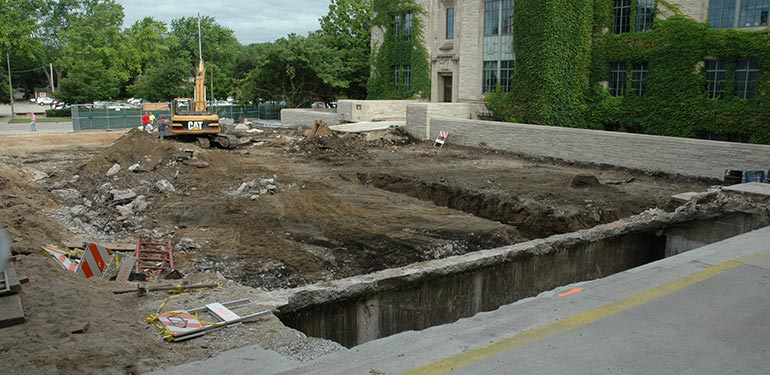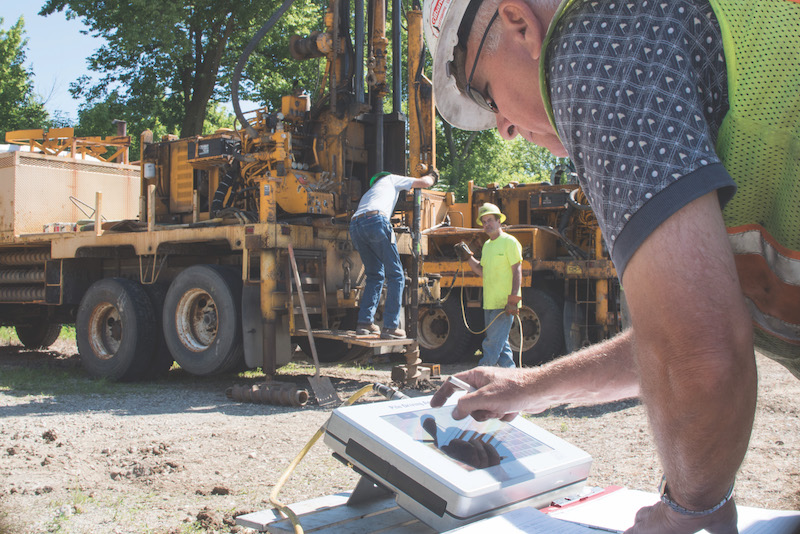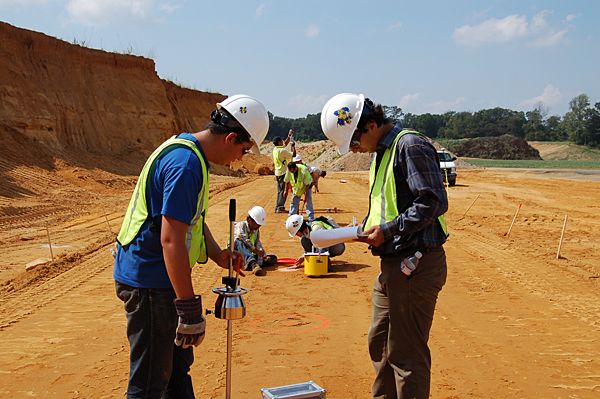Browsing the Complexities of Geotechnical Eng Projects
Wiki Article
A Comprehensive Overview of the Secret Duties of Geotechnical Engineers in Site Characterization and Ground Enhancement Strategies for Design Solutions
Geotechnical engineers are essential to the effective implementation of engineering projects, entrusted with the crucial obligations of site characterization and the application of ground improvement strategies. Their job involves an extensive analysis of subsurface problems, utilizing various testing methods to identify dirt and rock residential properties.Function of Geotechnical Designers
Geotechnical designers play a critical role in the design and construction of infrastructure by examining the actions of soil and rock beneath the surface - geotechnical eng. Their responsibilities encompass evaluating subsurface problems to notify style choices that guarantee architectural stability and safety and security. By performing in-depth analyses of soil residential properties, including shear leaks in the structure, compressibility, and stamina, geotechnical designers supply important data that influences the selection of appropriate building products and strategiesIn enhancement to assessing dirt mechanics, geotechnical designers are charged with identifying prospective threats such as landslides, sinkholes, and ground negotiations. Their competence assists reduce risks connected with these geotechnical sensations, therefore securing both the atmosphere and public security. They likewise collaborate carefully with other engineering techniques, guaranteeing that geotechnical factors to consider are integrated right into total project design.
In addition, geotechnical designers participate in the evaluation of existing structures, offering suggestions for retrofitting and repair services when essential. Their thorough understanding of soil-structure communication is essential for the development of sustainable infrastructure solutions. In general, the duty of geotechnical designers is integral to the successful realization of construction jobs, guaranteeing they are safe, resilient, and compliant with regulatory standards.

Website Characterization Processes
Reliable site characterization processes are essential for recognizing the subsurface conditions that affect task design and implementation. Geotechnical engineers use a methodical method to gather, assess, and translate information regarding soil, rock, and groundwater attributes. This process begins with a comprehensive review of existing literature and historic website information, providing understandings right into previous website conditions and potential obstacles.
Information analysis adheres to fieldwork, where engineers use geostatistical techniques to analyze searchings for and create geological models. This modeling aids in recognizing possible geohazards, such as landslides or liquefaction, which are critical for threat analysis. Ultimately, the outcomes notify layout referrals, making certain that engineering services are both reliable and secure. Via attentive website characterization, geotechnical designers prepared for effective project execution, enhancing and lessening unexpected difficulties source allotment.
Soil and Rock Screening Methods
While recognizing subsurface problems is vital, the selection of proper dirt and rock screening techniques is similarly important for exact evaluation and design. Geotechnical engineers use a variety of screening techniques to examine the physical and mechanical residential properties of soil and rock products.Laboratory examinations, such as Atterberg restrictions, grain size evaluation, and unconfined compressive stamina tests, provide essential information on dirt behavior under different moisture conditions and loading situations. These examinations help identify dirt classification and forecast negotiation or shear strength qualities important for foundation style.
In-situ testing approaches, including Standard Infiltration Tests (SPT), Cone Infiltration Tests (CPT), and pressure meter examinations, permit engineers to gather information directly from the ground. These methods offer valuable insights right into the dirt's thickness, uniformity, and stratification without the demand for comprehensive sampling.
Rock screening typically entails core tasting and laboratory analysis to analyze residential properties like uniaxial compressive strength and rock top quality classification (RQD) With each other, these soil and rock screening approaches allow geotechnical designers to make enlightened choices concerning site-specific difficulties, guaranteeing the safety and security and stability of engineering services.
Ground Improvement Techniques
Ground enhancement methods are essential for boosting the design residential or commercial properties of soil, consequently raising its load-bearing capacity and reducing settlement. These approaches are critical in resolving obstacles offered by weak or troublesome dirts, which can considerably affect the security and longevity of structures.Various ground improvement methods are utilized, including compaction, grouting, and soil stabilization. Grouting, on the other hand, entails injecting a fluid product into the ground to load voids and boost soil communication.
Soil stabilization incorporates a series of approaches, from chemical ingredients to mechanical treatments, targeted at improving the dirt's resistance to disintegration and deformation. Strategies such as lime stablizing or cement blending alter the residential properties of the soil at a particle degree, improving its total performance.
Importance of Geotechnical Analyses
Geotechnical assessments play a crucial role in the planning and layout of engineering tasks, as they offer important information regarding the subsurface conditions. Recognizing soil properties, rock formations, groundwater degrees, and possible geohazards is important for ensuring the security and security of frameworks. These evaluations enable designers to make educated decisions pertaining to site selection, style parameters, and building and construction approaches.
The importance of geotechnical evaluations expands beyond first project phases; they are instrumental in danger management and expense efficiency. By determining potential concerns early, such as soil negotiation, slope instability, or excessive groundwater, engineers can devise ideal reduction strategies, reducing the likelihood of architectural failures and costly delays. These assessments sustain compliance with governing requirements and boost the sustainability of engineering methods.

Final Thought
In conclusion, geotechnical designers are important to making certain the safety and security and stability of design projects via detailed site characterization and ground renovation methods. geotechnical industry. Their systematic strategy to examining subsurface conditions, integrated with their recommendations for reliable ground adjustment, considerably enhances dirt homes and load-bearing capacity. The know-how of geotechnical designers not just helps with informed task preparation but likewise makes sure conformity with regulations and promotes efficient interaction amongst stakeholders, eventually adding to successful engineering outcomesGeotechnical engineers play a pivotal function in the design and construction of facilities by analyzing the behavior of dirt and rock below the surface. By performing in-depth evaluations of soil buildings, including shear leaks in the structure, compressibility, and toughness, geotechnical engineers provide essential data that affects the option of appropriate construction materials and strategies.
In enhancement to analyzing soil mechanics, geotechnical engineers are tasked with identifying potential dangers such as landslides, sinkholes, and ground settlements. geo tech engineering Geotechnical engineers employ a systematic approach to collect, review, and analyze information regarding groundwater, soil, and rock attributes. By determining possible concerns early, such as dirt negotiation, incline instability, or excessive groundwater, engineers can design suitable reduction methods, minimizing the likelihood of expensive hold-ups and architectural failings.
Report this wiki page